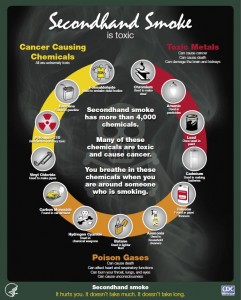In the fall of 1997, my mother was shocked to discover her baby could not ingest formula without getting sick. Regardless of the brand or type, I still could not drink it. She was very concerned and confused and went to multiple doctors to discover the reason. After visiting several doctors, my mother concluded that I have a severe milk allergy. Throughout my entire life, I have had to avidly avoid dairy products such as ice cream, chocolate, yogurt, cheese, etc. Doctors repeatedly told me that, with age, I would outgrow my allergy. However, the exact opposite occurred. The severity of my reactions worsened to now being practically fatal.
Allergies are a result of an overactive immune system that recognizes a harmless substance as a threat to the body. The brain triggers the system to produce immunoglobulin antibodies as a defense. The dispersal of the antibodies causes the allergic reaction. Doctors do not know the mechanism or reason why some allergies disappear over the course of someone’s lifetime. A possible explanation for the disappearing allergies is that a person grows accustomed to the allergen. Regular exposure dulls the body’s reaction to eventual disappearance. Doctors can predict whether or not a child will outgrow an allergy through a blood test that measures the number of immunoglobulin antibodies in the blood stream when probed with the allergen. When a person suspects he has outgrown an allergy, the allergist can conduct a “food challenge” and give the patient a small amount of the allergen and carefully watch the person’s reaction. (Live Science)
So why do some children outgrow their allergies while others like myself do not? Studies suggest that 60-80% of children will outgrow a dairy allergy by age 16, 20% of children will outgrow a peanut allergy, and 4-5% will outgrow a shell fish allergy. However, if a person contracts multiple allergies than his chances of outgrowing the sensitivity are slim. Unfortunately, it is very common for a child to be born with more than one allergy. Along with dairy, I was also allergic to eggs and soy but outgrew both. (Healthline) 
Johns Hopkins Children’s Center conducted an experiment to discover how likely a person is to outgrow a dairy or egg allergy, two of the most difficult allergies to outgrow. The study followed 800 children with a milk allergy and 900 with an egg allergy for 13 years. The results showed that the allergies followed the children far into their teen and adult years; thus, the chances of outgrowing the allergen are extremely low. Robert Wood, M.D. of Hopkins Children states that over the course of 20 years more children are born with allergies than ever before and they are becoming harder and harder to outgrow. Also the sudden surge in allergies could be due to increased awareness. In previous decades, people were not as familiar with food allergies and some may have gone undiagnosed.
Unfortunately for me, I am still allergic to milk at age 19. I will most likely be allergic for my entire life. Certain allergens are easier to outgrow than others and some are actually permanent.










